February 5 at 12:31 pm, 132 673 view
• Print
Subscribe for new videos
Resolution Ultra HD continues to gain momentum, and the like TVs dominated by the number of announcements on exhibitions. Almost every manufacturer has managed to acquire one or more models with support for UHD, but support for HDMI 2.0 is still a rarity. Nevertheless, competition is growing rapidly, and any “trick” is worth its weight in gold. TV with built-in camera is no surprise, but what if you add back the soundbar? LG has equipped the UHD-TV series LA970V checking out the soundbar from which you can expect a decent sound. Also there’s all the usual arsenal of LG Smart TV, passive CINEMA 3D technology and, of course, support Ultra HD. What this list really useful and what is not – you’ll learn from our review.
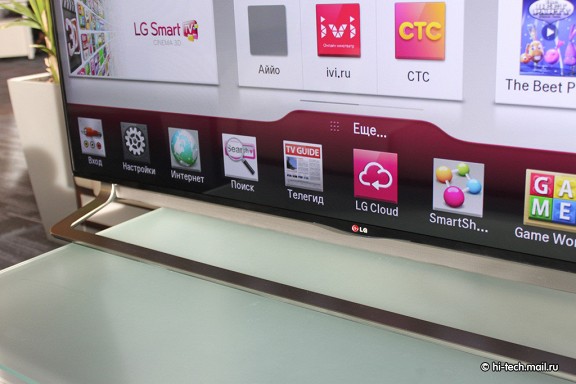
Key Features
- diagonal 55 inches (140 cm)
- NANO FULL LED
- Panel resolution: 3840 x 2160 pixels (Ultra HD)
- Polarization technology CINEMA 3D
- Integrated Sound slide panel 4.1 total power of 50 W
- enhancement technology transfer motion 1000Hz Motion Clarity Index
- Function Smart Share (built DLNA-klient/WiDi)
- Support for Mobile High-Definition Link (MHL) for direct connection of mobile devices to the TV
- Interactive System LG Smart TV
- Remote Magic Remote with Motion Detection
- Camera and gesture control
Highlighting
model was tested on LG 55LA970V. Recommended price – 153 900 rubles.
design and construction
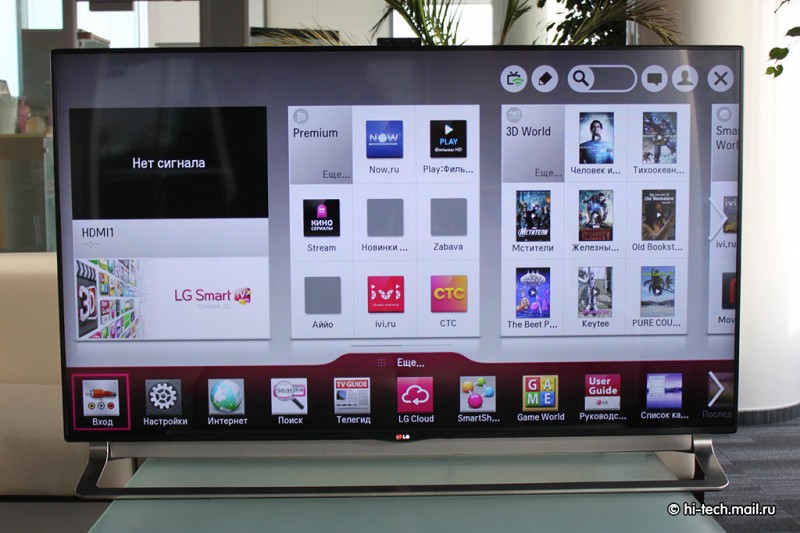
LG 55LA970V
Externally very similar to the rest of the series TVs LG, thanks to the overall design of Cinema Screen. Here reign “ultrathin” motives: for example, the thickness of the screen frame – less than 1 cm, the perimeter has metal edging. Seemingly quite a familiar sight, but it is slightly different if you turn the TV.
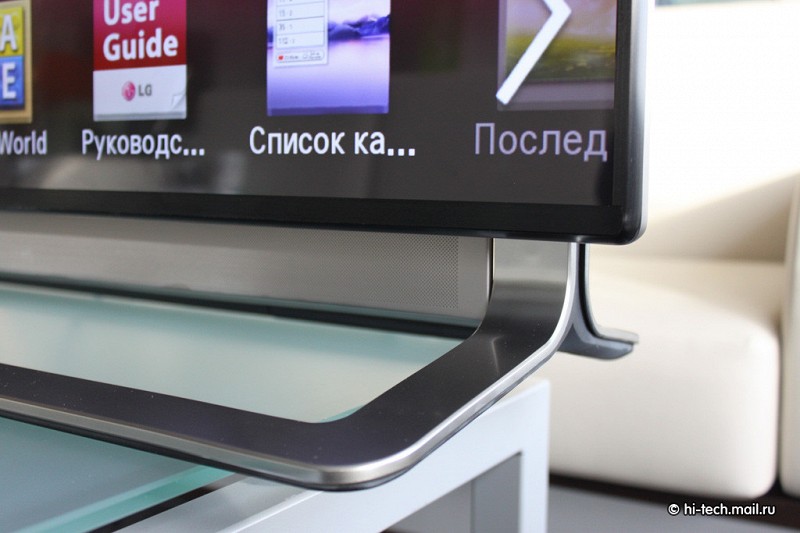
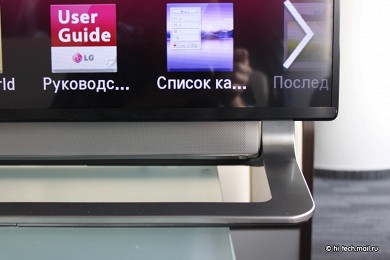
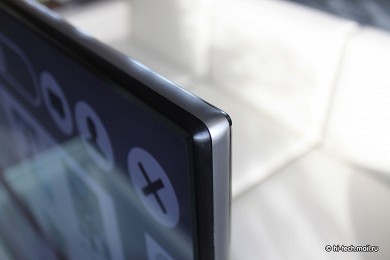
It
when turning LA970V shows one of its main chips – on the bottom leaves hidden sound bar (similar soundbar), which, incidentally, sounds pretty good by the standards of built-in speakers. Accordingly, when you turn off the slide panel put back into the depths of the housing. If desired, it can be locked in permanently “taken out” position, but that few want to deprive yourself of pleasure whenever observe this process, though?
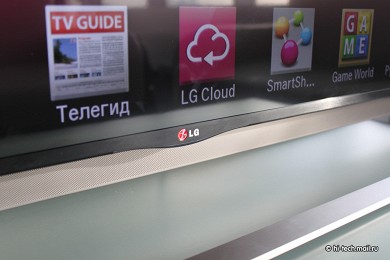
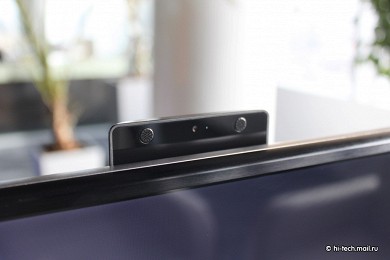
Despite such delights, TV cabinet has kept a very low depth – about 4 cm of course, at the bottom, where is the sound slide bar, the case becomes a bit thicker. I would say, the presence of the soundbar is not strongly affected by the thickness of the TV – the impression of “lightness” is not lost. Why not tell the real weight of TV, which reaches 30 kg to account holders. Assembly requires attention, carefully priladit stand is not so easy.
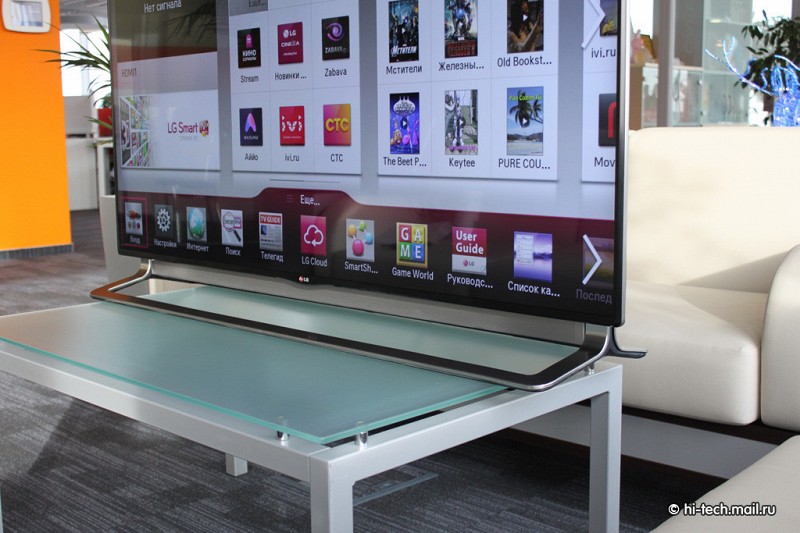
TV Stand has a surprisingly calm design. Korean manufacturers often boldly experiment with this element, but stand LA970V – quite familiar U-shaped. Design in this case bears a purely practical function: sound slide panel someone is combined with a stand.
interfaces, management and functionality
set of interfaces LG 55LA970V absolutely standard. Located behind the TV 4xHDMI, 3xUSB, slot Common Interface (CI), as well as a network connector LAN, connectors and common satellite dish and other relevant interfaces. Analog interfaces are made in the form of remote adapter (Y / Pb / Pr and SCART). Likely in the foreseeable future, we did stop them and see.
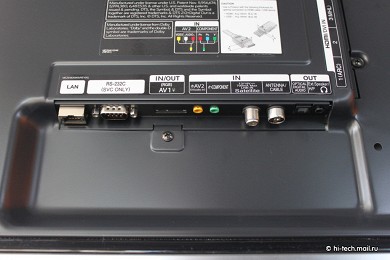
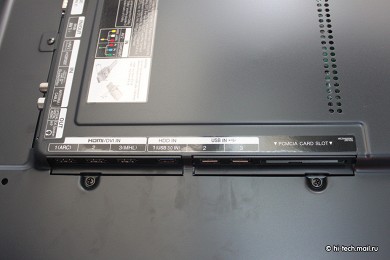
HDMI 1.4
Curiously, the HDMI interface here is version 1.4, which allows you to transmit video Ultra HD 2160p with a frequency above 30 Hz. Speech support 60Hz or subsampling 4:4:4 signals Ultra HD/4K is not – it is the prerogative of the new standard HDMI 2.0. While other manufacturers offer a variety of upgrades to HDMI 2.0, software or hardware, similar to LG update is not planned.
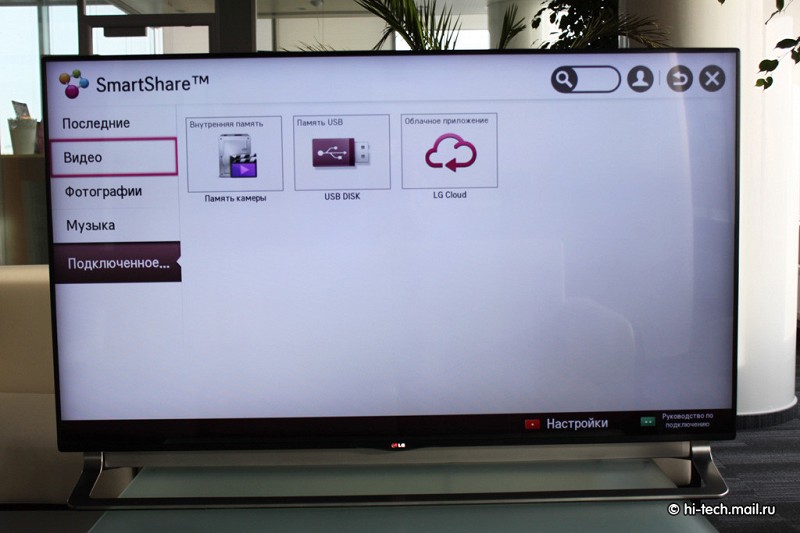
USB connectors allow you to connect external drives and play entertainment content – photos, music, videos. And the number of playable formats traditionally high – built-in player, you can say, is omnivorous. Supports multiple options even MKV, one of the most popular containers for HD-video. Interface built-in player is comfortable enough, television effortlessly copes with a large list of files on the connected USB flash drive or external HDD.
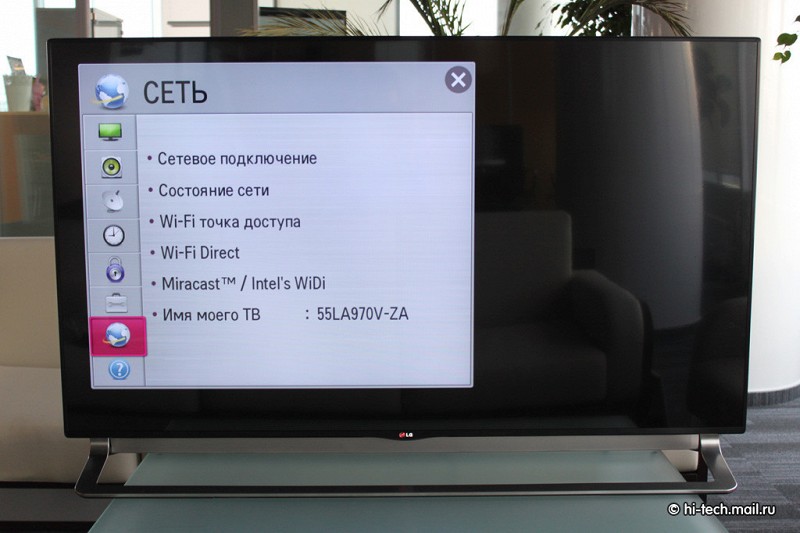
also has a built-in TV Wi-Fi adapter and protocol support DLNA – it allows you to arrange a convenient library homepage. There is also a special client application cloud service LG Cloud – storage like Dropbox.

As for tuners, the LG 55LA970V able to accept most modern formats: DVB-T2 (digital terrestrial), DVB-C (digital cable TV), as well as satellite DVB-S2. Main attention is paid to the presence of standard DVB-T2 – it says that 55LA970V already ready to receive Russian digital TV.
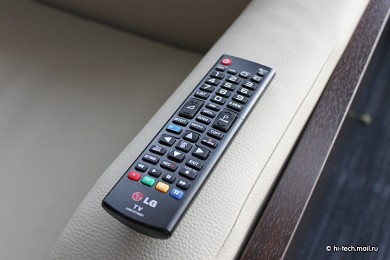

Included LG 55LA970V delivered two remote controls. One of them – the lowly button remote that fits comfortably in the hand and provides the usual navigation on the TV menu. But for maximum ease of use features in Smart-LG offer another remote – “magic» Magic Remote with motion sensors. I must say that the Magic Remote – is very convenient and intuitive way to control who loves us even on past models.
LG Smart TV
We already acquainted readers with an interactive system, LG Smart TV and Magic Remote control in the previous review LG 55EA980V. Actually, interactive features on the model LA970V look and work the same way, so we will not repeat – you can read the details at the above link.
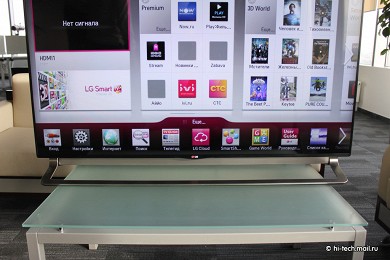
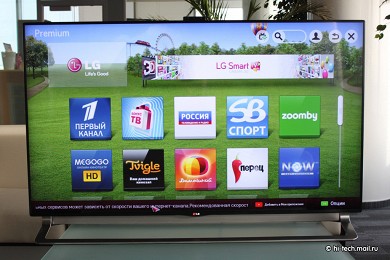
Sound
Sound System LG LA970V – obviously one of the striking features. Besides the fact that the slide panel effectively “hides” in the case, it sounds quite decent.
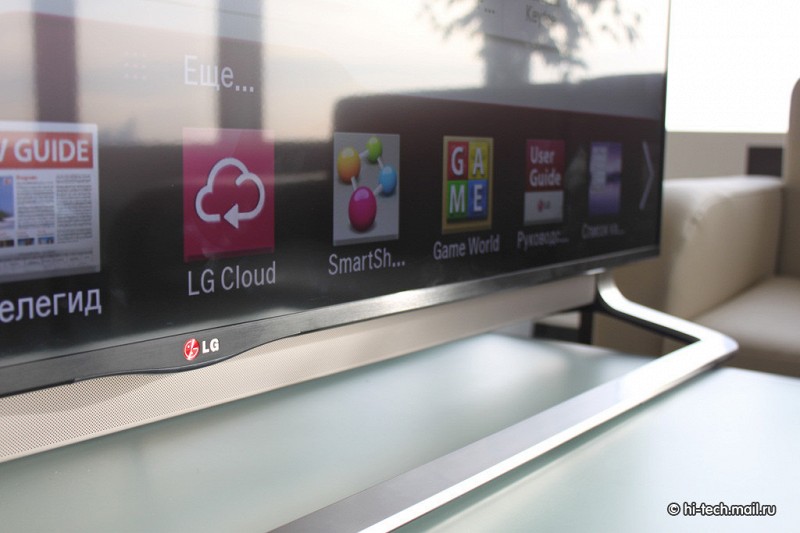
Due to the fact that the sound is emitted directly to the listener, it is a more clear and open than we usually hear on thin televisions. Moreover, there is a sane low frequency range – enough to sound seemed “flat”. Completes the picture of a decent stereo, giving an improved sense of space.
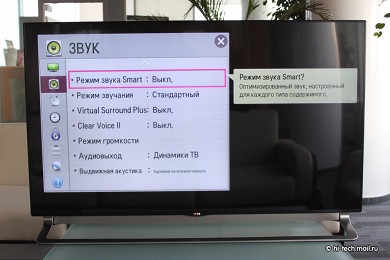
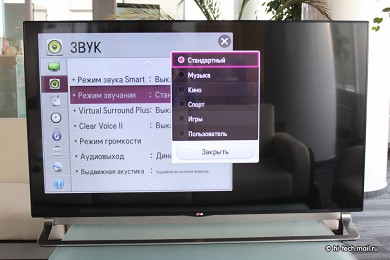
We will not draw parallels with the full home cinema 5.1 – This category is still reachable, but LG LA970V – a rare case where an integrated TV sound can be used without any regrets. Soundbar provide decent voice acting and broadcast television, and movies – dialogues or explosions will not pass unnoticed, quite an achievement for a private TV speaker system. Frankly, we rarely come across televisions with good sound – and then LG LA970V became a pleasant exception.
Image
As usual, we focus on the main TV functions – creating impressive images that would meet all quality standards. To objectively evaluate the image, we use the best video tests and benchmarks, as well as pay attention to the calibration of TVs that you can compare them in fair conditions with optimal settings.
factory settings
set picture modes on 55LA970V familiar to TV LG, here present 7 preset modes: “Vivid”, “Standard”, “eco”, “Cinema”, “Games” and two modes «ISF Expert”, which are intended for professional calibration. Everything in order.
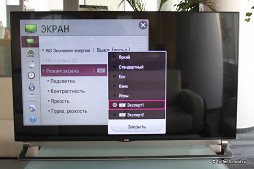
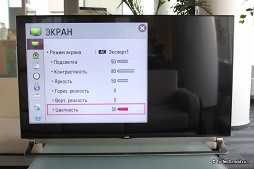
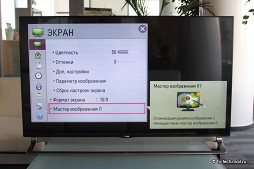
«Bright” and “standard” in nature rather fit for the store. Image is very bright, but the overall tone is too cold, which adversely affects the color rendition. In addition, excessive processing circuits leads to many artefacts in the image. Much better for home use mode “Cinema”, which, as the name implies, is designed for watching movies or television. But, there are some flaws.
default brightness is 236 cd / m 2 , a high value is more appropriate if the TV is under the direct sunlight. Otherwise, the brightness can safely lower by almost half – and eyes are less tired, and the image will be soundly.
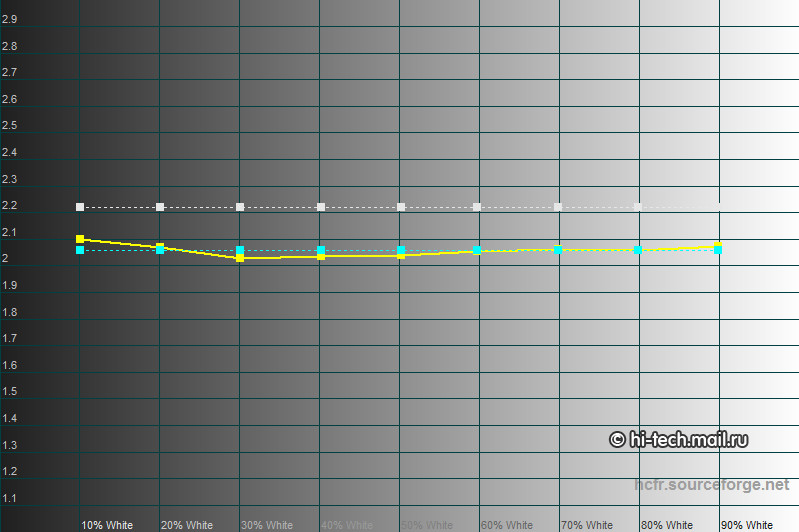
Gamma mode “Cinema” is quite linear, but average – 2.05 instead of the optimal 2.2. Obviously, such a setting more suitable for daytime viewing, the image will appear in the evening too, “whitish”. Halftone appear brighter than it should, so shadows lacks depth.
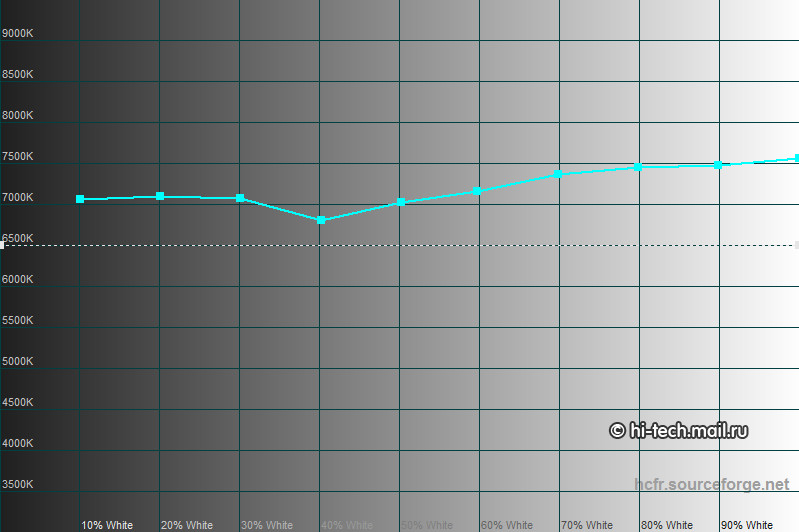
average color temperature – about 7000K, the image takes on a cold tone.
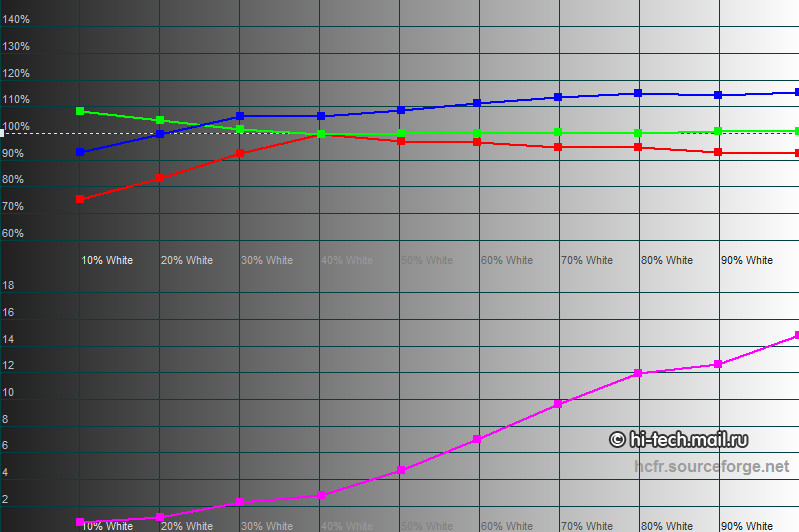
color balance is uneven, and especially dark gradations. The magnitude of the imbalance can be estimated through chromatic aberration Delta E: average error – about 6.77 units. Distortions are quite large, the setting could be better. For example, LG 55LA860V showed more accurate setting “out of the box” and more even color balance.
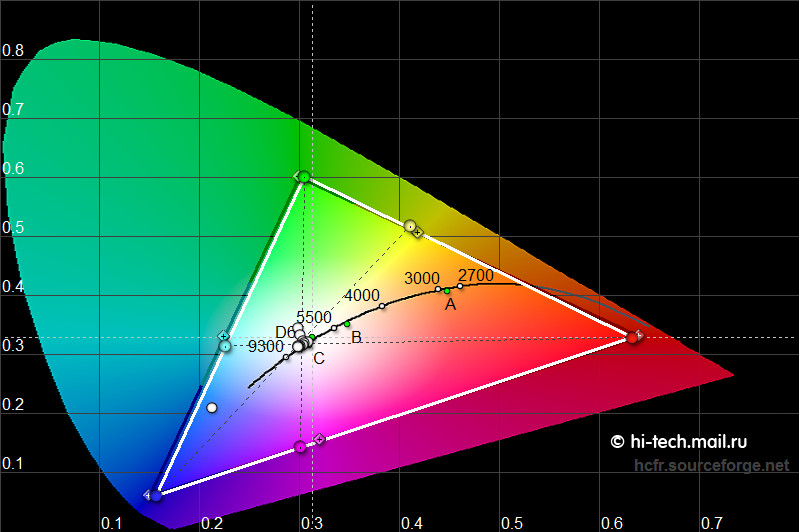
color gamut LA970V compliant Rec. 709 (HDTV). But only on the accuracy of the boundaries of acceptable range for a 100% color saturation. Average error of color expressed in Delta E – 3,38 units. Alas, border range does not reflect the whole picture.
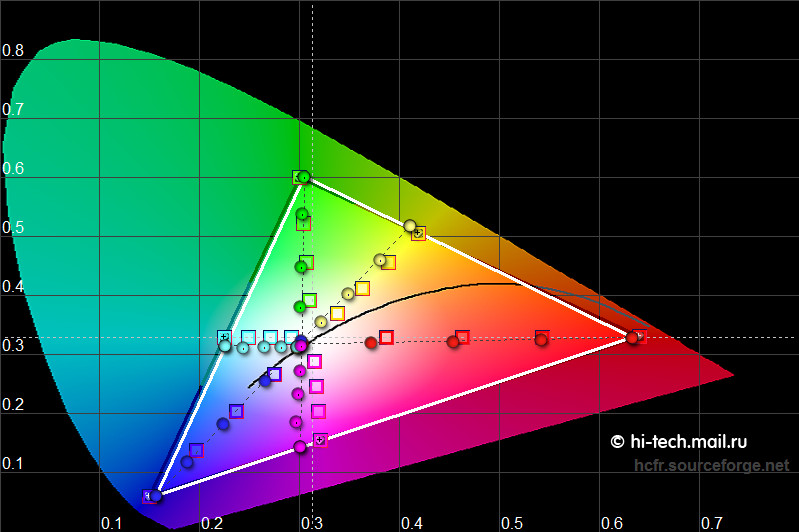
Evaluation
colors at 0-75% saturation indicates that these intervals distorted rendition significantly stronger than that at the maximum saturation. Obviously, many colors are shifted in hue. Delta E errors often exceed the threshold of 5 units, not too enviable results.
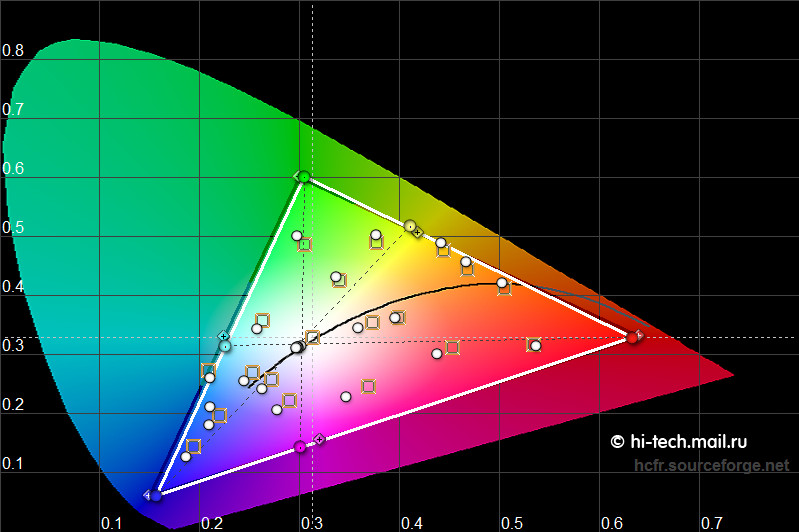
Evaluation using standard ColorChecker targets 24 gives better results: the average error Delta E – 3,62 units. This suggests that the color reproduction mode “Cinema” is at an acceptable level – an inexperienced viewer hardly notice the large distortions, but still present. Anyway, the proposed set of mode “Cinema” the most adequate.
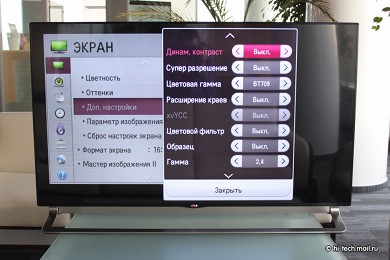
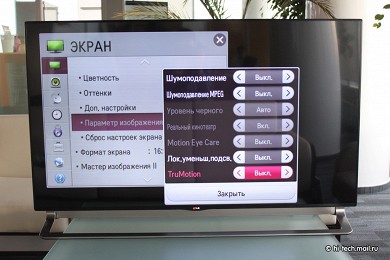
Mode “Eco” is similar to the “standard”, but uses the energy saving features. Mode “Games”, as the name implies, is designed for dynamic games – it lower input signal delay (input lag). However, the lag is still felt, and may interfere with the advanced gamer reflexes. Play here is not as comfortable as a “fast” TVs with minimal delay.
particular interest are the modes «ISF Expert”. In addition to adequate brightness and good basic setup, they have enhanced image calibration, which we tried to use to defeat the flaws found.
Calibration
To fine-tune your TV set has a white balance adjustment on the 2 or 20 points, as well as color management system (CMS), which can be fully customized settings such as saturation, hue and brightness of each primary (RGB) and secondary colors (CMY). And if the previous models LG these settings to work as it should, in the case of LA970V we stumbled upon frank bugs.
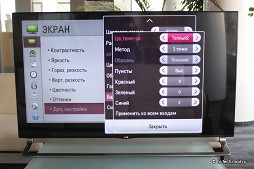
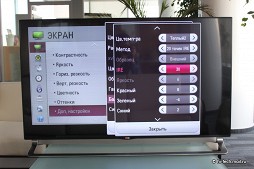
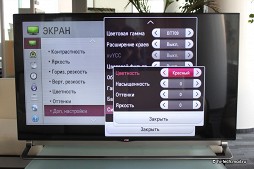
color balance is initially configured rough and fix it with a 2-point adjustment is problematic. Intermediate result can not be called successful. In an attempt to smooth out the balance with 20-point adjustment revealed that she sometimes does not work, and if they work – that regulates the neighboring intervals relative claimed!
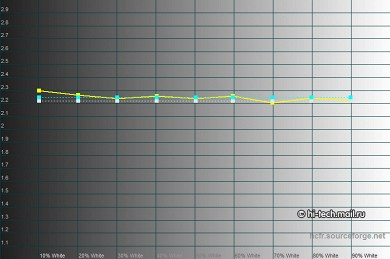
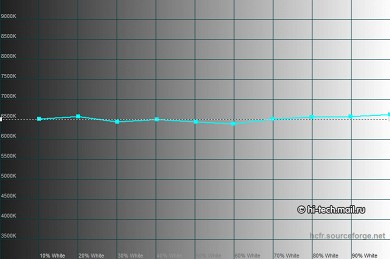
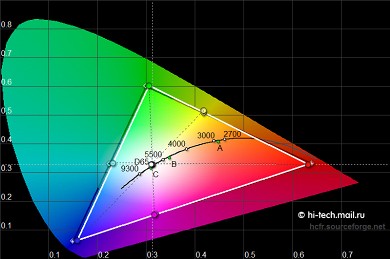
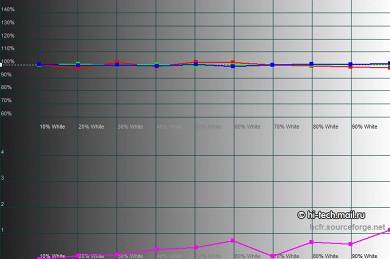
Further experiments revealed that abundant 20-point correction, in order to achieve an even color balance scale and lead to strong image posterization – i.e. delamination gradients. Despite the excellent results of painstaking calibration, real pictures were full of coarse gradation transitions. I recall that in the previous model that was tested – LG 55LA860V – such problems were observed. Obviously, LG should work on error correction to abundant tools for calibration earned as follows.

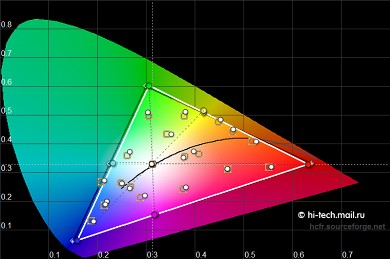
Despite some problems, the potential for good calibration of the TV is – and it will be easy to uncover when the settings will be repaired. Our foreign colleagues also complained about the color management system (CMS), but when setting up our LG 55LA970V problems began even earlier. What to say – in our opinion, for the expensive Ultra HD TV such flaws are not allowed.
Contrast
Depth
black – this is one of the most important characteristics of the image. Previously tested LG OLED-TV has attracted a lot of enthusiasm because of its incredibly deep contrast and the living image. Naturally, such a level of LED LCD-TV is not expected. Yet a series of LG TVs equipped with local lighting LA970V NANO FULL LED, which operates in a dynamic mode. Let’s see how she copes with its tasks.
If the starting point of order to take brightness 120 cd / m 2 , then the depth of black on filling the entire screen will be 0,012 cd / m 2 , which gives the final factor Contrast On / Off at 10,000:1. Impressive numbers and no catch? Naturally, for the IPS is not quite true.
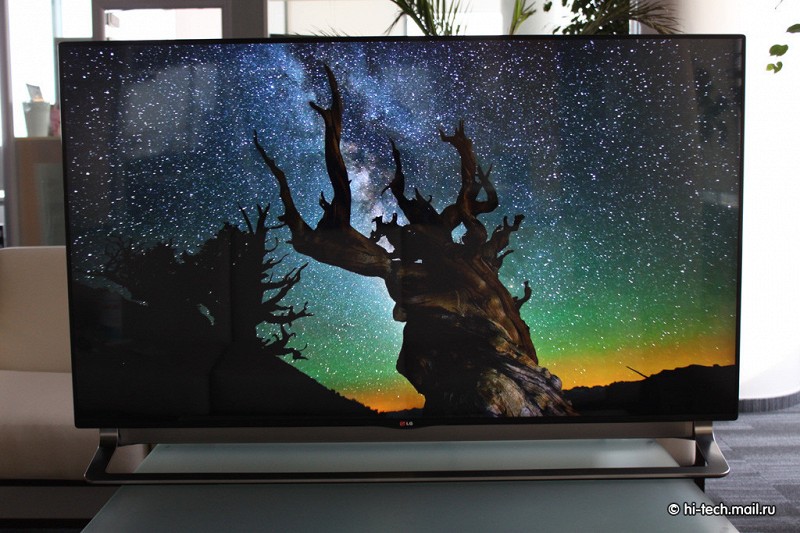
turns, NANO FULL LED lights continuously working in a dynamic mode, even if the corresponding option in the menu is disabled. Screen can “tighten” or “extinguish” the brightness on the local site, and here especially advantageous situation when bright and dark areas are not coexist within one frame. Therefore contrast On / Off, to put it mildly, not quite reflect reality. Extinguish black fill there is no difficulty, hence the inflated values appear in the contrast ratio.
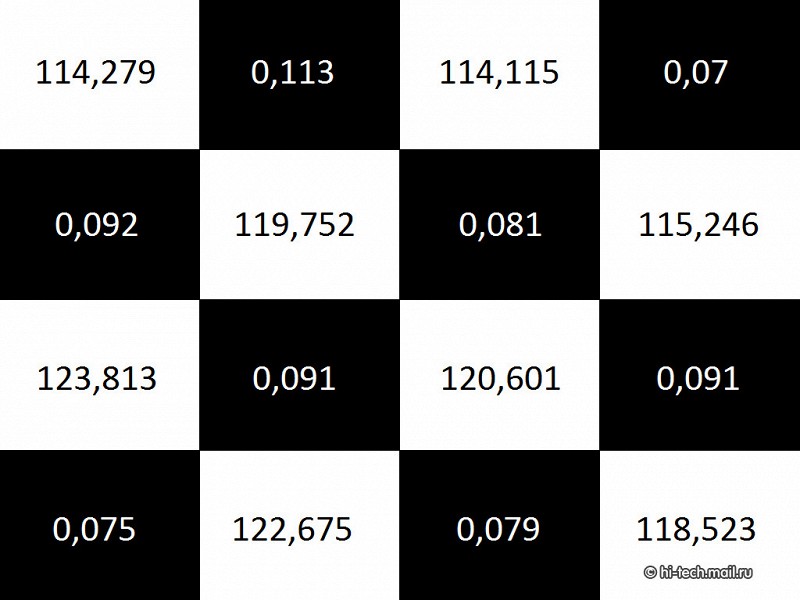
more detailed measurement of the contrast on the “chessboard» ANSI size 4 x 4 gives the following results: the average brightness of the white fields – 118.63 cd / m 2 , black – 0.087 cd / m 2 . Consequently, the contrast ratio within a single scene is about 1371:1. By the standards of IPS technology is a good result – for example, Ultra HD TV LG 84LM960V contrast had almost three times lower! However, for modern IPS ceiling is a factor of about 1200:1. Due to what was achieved a small increase? The answer was in front of his eyes, as soon as we turned the usual contrasting scenes for visual assessment.
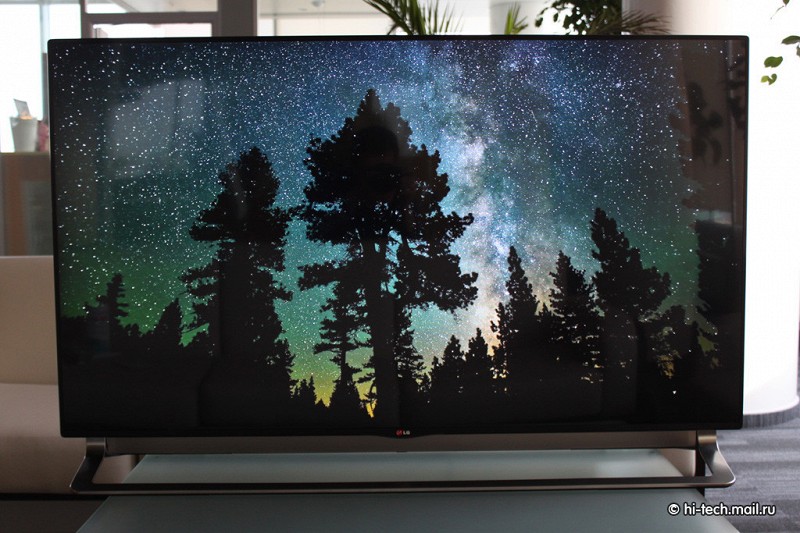
As already mentioned, the dynamic backlight is always on, and with it “floats” the brightness of the scene. Value display a contrasting combination – as the brightness began to decline in order to improve the depth of black, but with it sailed into oblivion and detail in the shadows! That is the next gradation near black were “merged” into a single spot – on shaded objects is difficult to see any details. And the adjustment parameter “Brightness”, which is just responsible for the black level of the signal, there was almost powerless – raising the brightness can degrade black, but distinguishable details in the shadows much better not be. Just in case we checked scale and range of the signal HDMI, make sure that clipping (loss of gradation) occurs precisely at the final stage display.
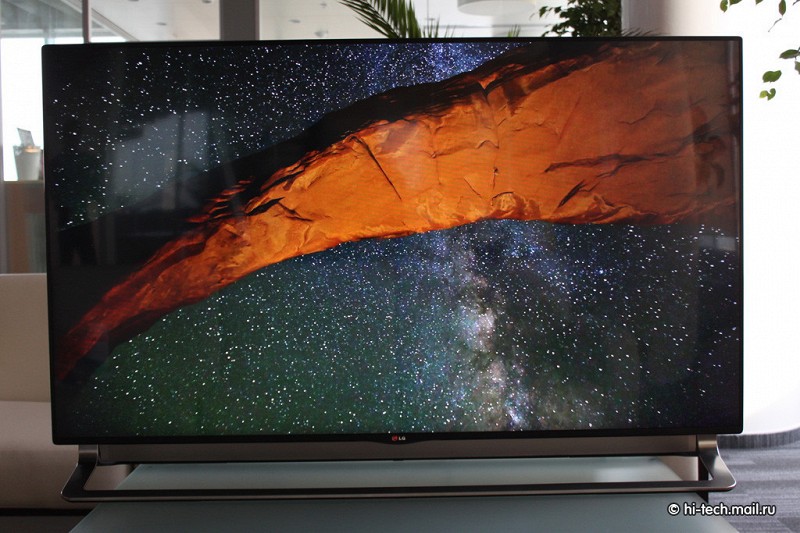
turns out that the weak shadow detail – is the constant companion of the TV because nondisconnectable dynamic backlighting. Moreover, picky viewers may seem too intrusive permanent change screen brightness after the signal. Forced activation of dynamic lighting can enhance ANSI-contrast to nearly 3000:1, but in this case, the shadow detail is reduced even more, and floating brightness becomes clearer. Besides, bright objects on a dark background reserve pronounced “halo” effect for habitual carpet backlight.
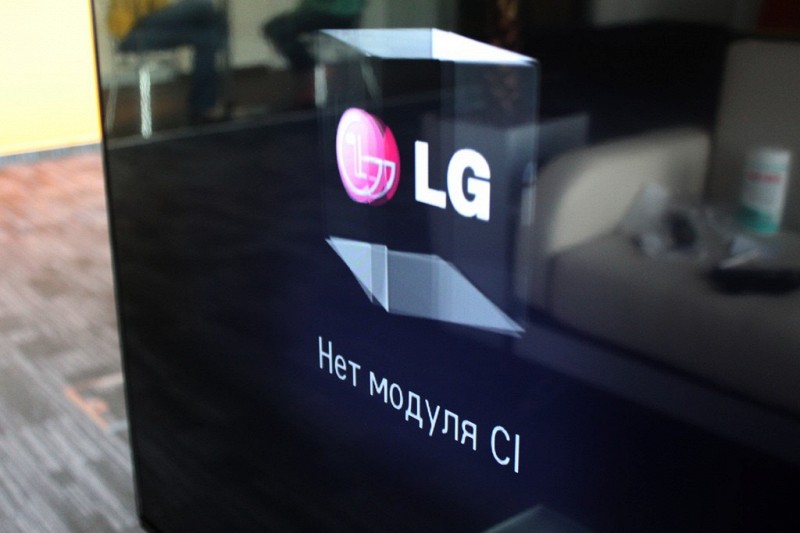
In defense
dynamic backlight can only say that it hides uneven well – on the screen really hard to complain about any “overexposed” areas, especially in the presence of signal. Well, of course, dynamic lighting helps considerably in the IPS panel display more or less deep black – it’s one of the key weaknesses of this technology in the fight against which all methods are good. Another thing is that on an alternative technology VA black initially significantly deeper, and this without the aid of dynamic lighting – for example, we tested before TVs we saw static contrast of 3000:1 and higher order. It turns out that the NANO FULL LED lights well masks mediocre contrast IPS, but still can not compete on a real contrast with LCD panels, VA, and even more so with plasma TV (PDP) or OLED.
transfer of motion
As usual, standard stress test at a speed of Motion Resolution 6,5 ppf shows distinguishable lines 300 1080 without further processing. That is pretty dynamic image loses clarity. It is not difficult to guess that signals Ultra HD/4K loss affects even more – crystal clarity disappears in motion.
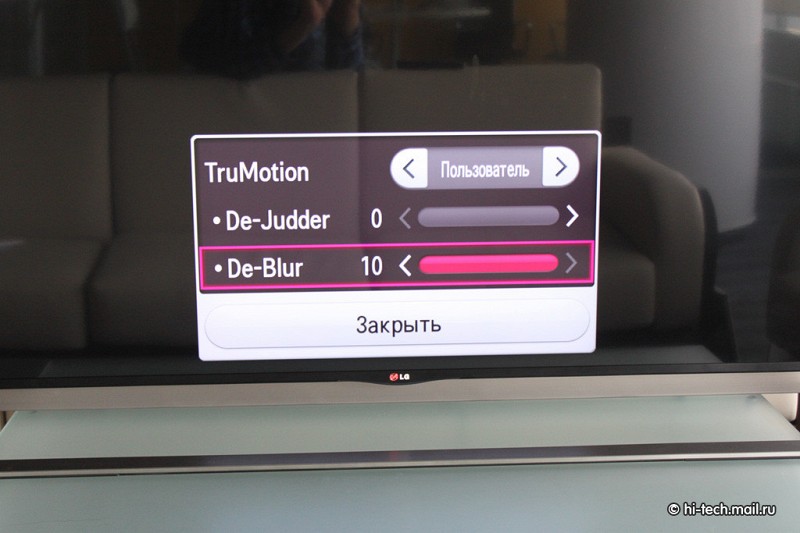
Activation
TruMotion frame interpolation can increase the resolution of the dynamics, but to avoid the effect of “soap opera”, choose “Custom” mode TruMotion. If you put the parameter De-Judder to 0 and De-Blur on 10 points, will be able to avoid the effects of unnatural movement in the movies. Other modes involve forced interpolated frames, so they are better suited for video – such as sports broadcasts. However, do not overestimate the ability TruMotion – surprising, but in many situations increase was not so big as you can expect. In addition, the fast-moving contours noticeably ghosting or trails, and sometimes processing artifacts TruMotion – all this in the amount neluchshem effect on dynamic objects.
Angles
installed in the TV matrix LCD IPS provides wide viewing angles. Different angles image significantly loses contrast, but the colors are distorted slightly. Glossy finish of the screen, however, creates additional difficulties. Different reflections and glare can interfere with image – anti-glare properties could be better.
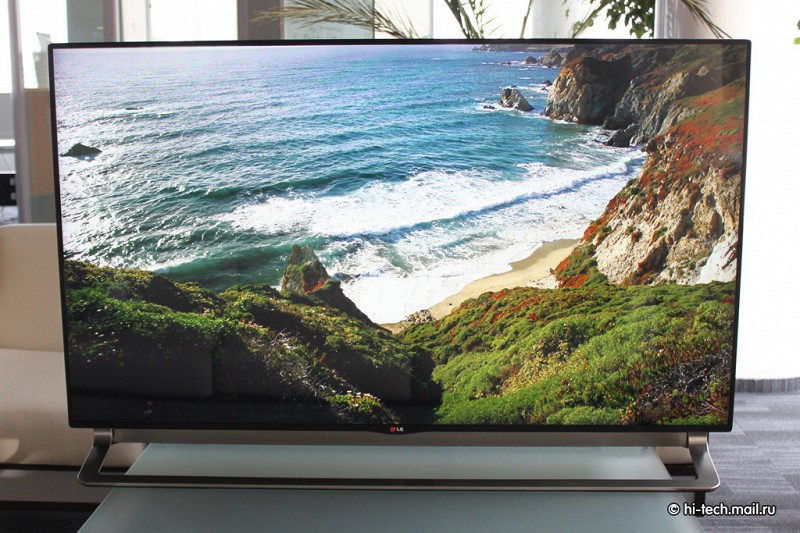
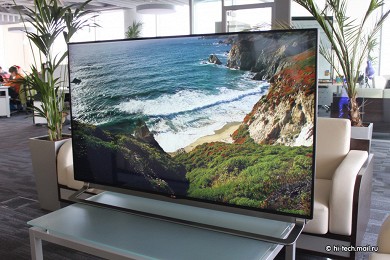
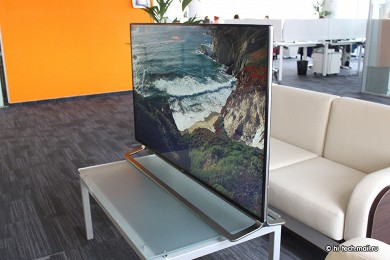
uniform image
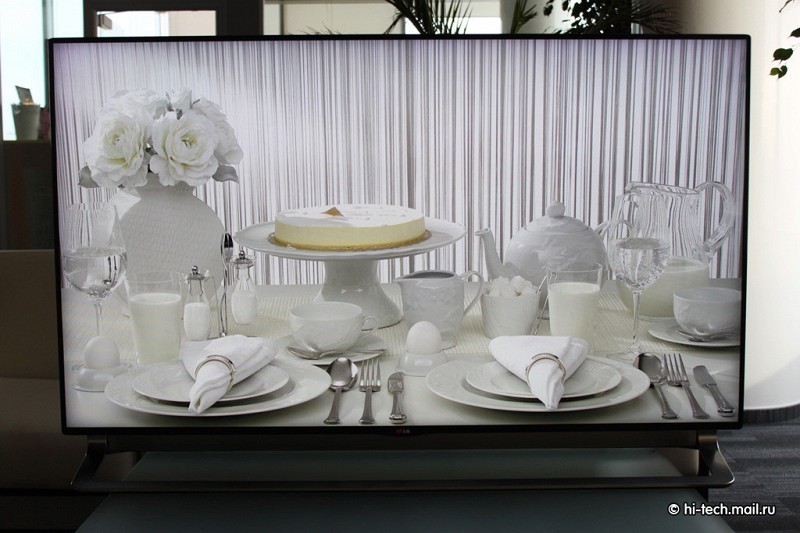

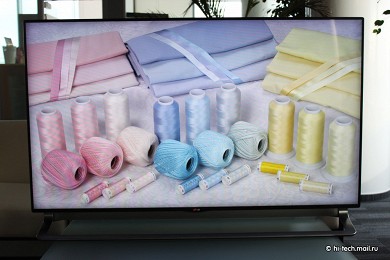
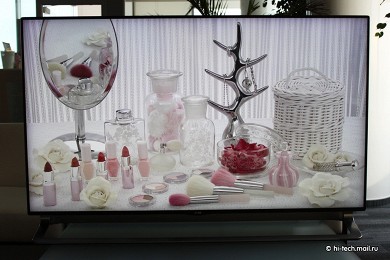
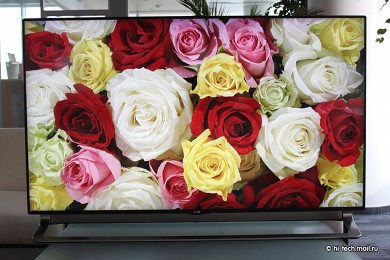
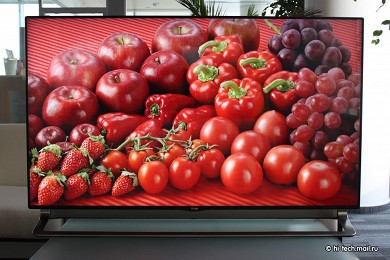


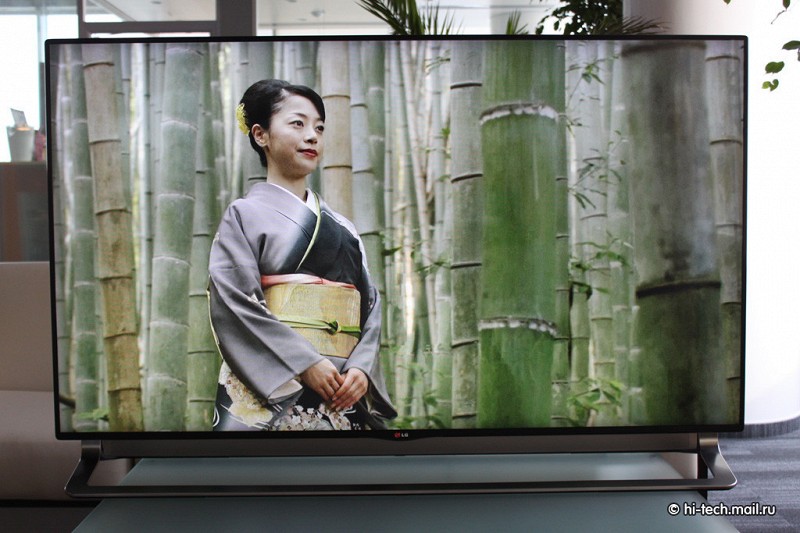
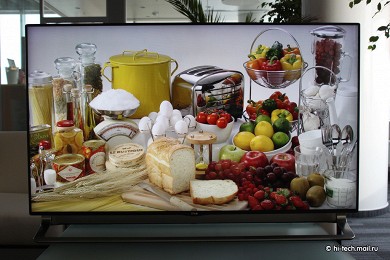
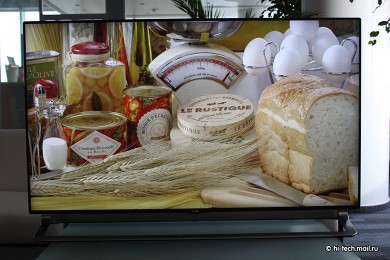
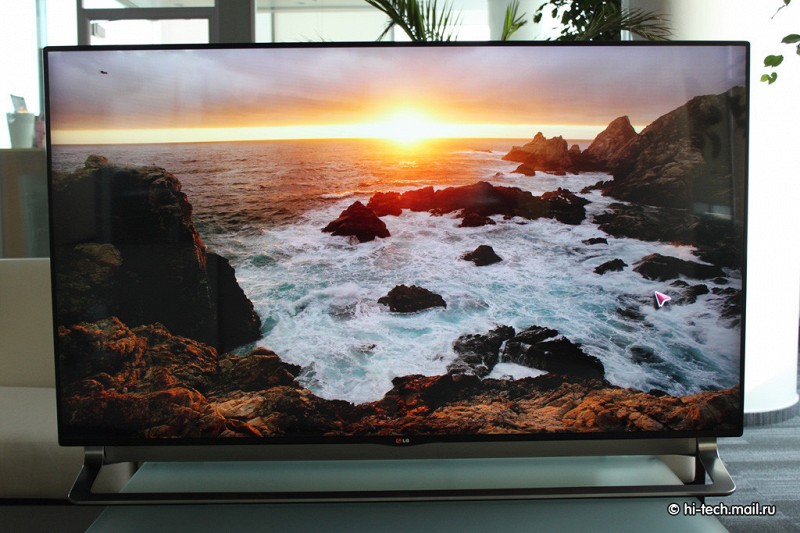
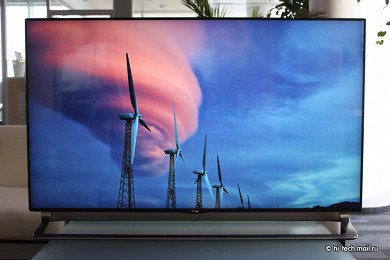
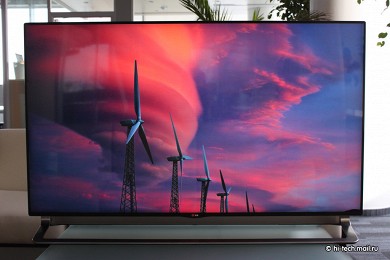
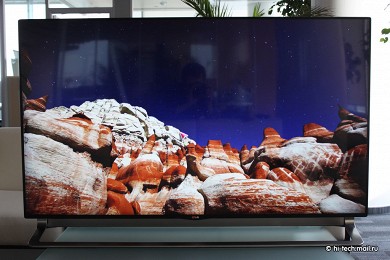
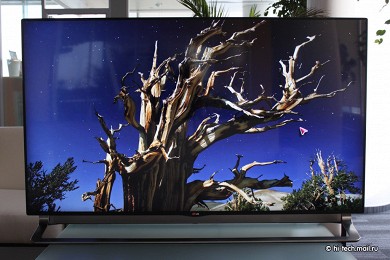
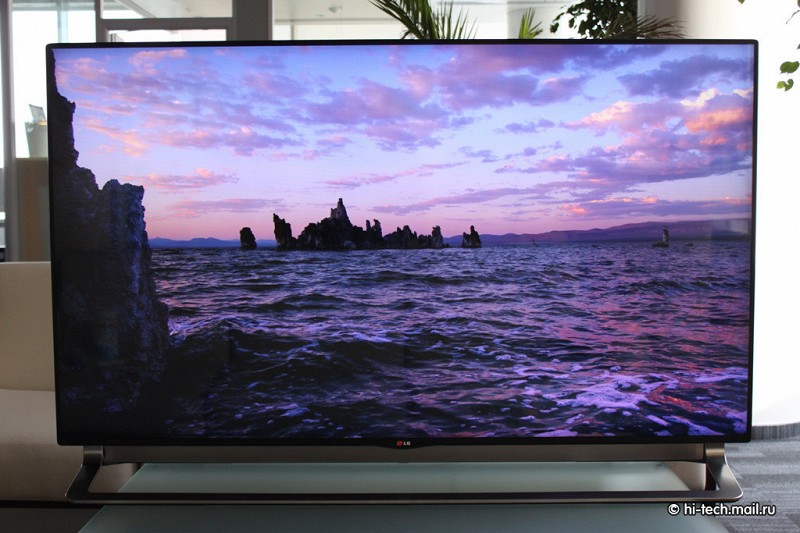
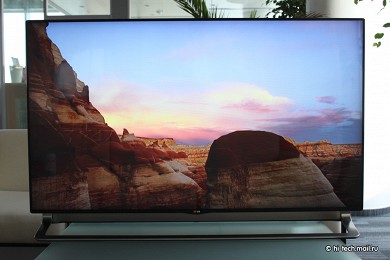
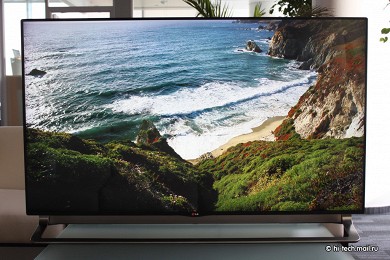
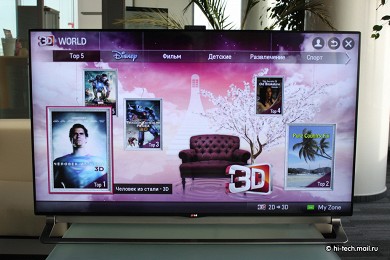
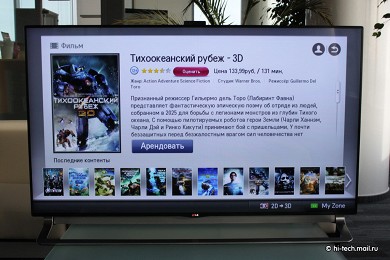
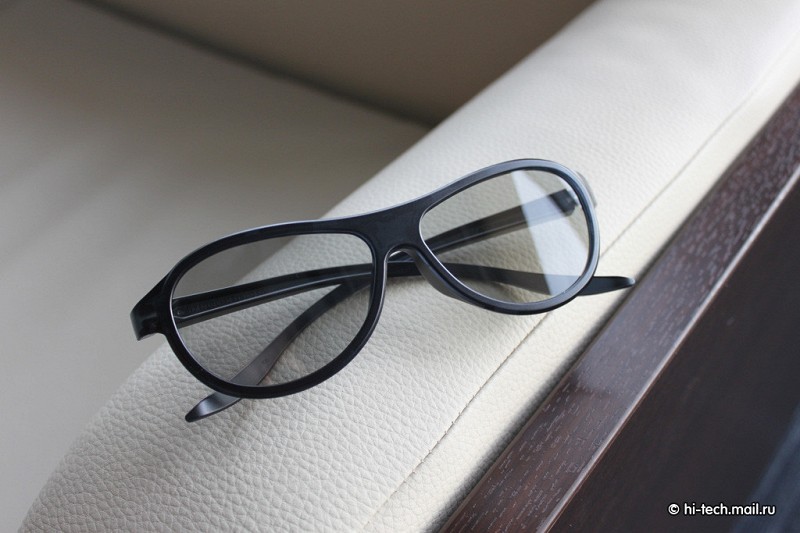
Одноклассниках”>Класс
No comments:
Post a Comment